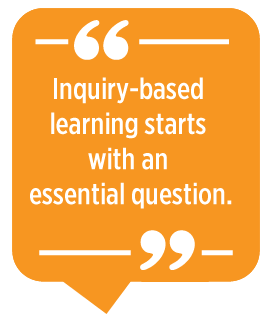|
 Many newcomers who are also English as an
additional language (EAL) learners engage in self-directed EAL learning in the
workplace. By participating in workplace socialization processes, newcomers
gain work-specific vocabularies and additional language experience, which
supports their journey to fluency. However, this ad lib method comes with an
extended period of additional language learning that works like a double
cognitive load at a time when newcomers should be focusing on bringing their
expertise and innovation to the workplace.
Many newcomers who are also English as an
additional language (EAL) learners engage in self-directed EAL learning in the
workplace. By participating in workplace socialization processes, newcomers
gain work-specific vocabularies and additional language experience, which
supports their journey to fluency. However, this ad lib method comes with an
extended period of additional language learning that works like a double
cognitive load at a time when newcomers should be focusing on bringing their
expertise and innovation to the workplace.
Workplace English programs may be shaped
specifically for an industry or workplace. However, educators seeking to
support newcomers in smaller communities are more likely to work with students
who either come from, or are aiming for, a wide variety of jobs. In these
situations, the definition of what is a business English, workplace English, or
English for special purposes course may be very different. This article draws
on current research to offer three considerations for educators who are
developing curriculum and learning experiences for general workplace English
programs.
1. Share the Framework
Theoretical perspectives of additional language
learning are not usually made explicit in the classroom, but it is worth
considering that this could be a key feature of adult EAL education in workplace
settings. In this way, students are invited into the discussion of additional
language learning through the same doorways of understanding that educators
use.
 For example, the theory of additional language
socialization perceives language learning as occurring through bidirectional
socialization processes into a group (Duff & Talmy, 2011). In the
classroom, educators can use this understanding to activate student awareness
of their coworkers and community members as potential learning affordances.
Learning experiences then become designed to guide students to recognize and
more fully participate in additional language socialization at work and in the
larger community. For example, the theory of additional language
socialization perceives language learning as occurring through bidirectional
socialization processes into a group (Duff & Talmy, 2011). In the
classroom, educators can use this understanding to activate student awareness
of their coworkers and community members as potential learning affordances.
Learning experiences then become designed to guide students to recognize and
more fully participate in additional language socialization at work and in the
larger community.
Drawing on this theory, humour can work as an
additional language socialization process in the workplace. Workplace
interlocutors may use humour to convey intent, correct a new employee, and
socialize newcomers into the workplace culture (Holmes, 2005). In the
classroom, humour can be harnessed as part of a larger discussion about
workplace culture to support students’ casual conversation skills development.
For example, students can be scaffolded into practicing wordplay while sharing
previous experiences and observations of how humour is used in the
workplace.
Okayama University Associate Professor John
Rucynski edited an excellent resource, New
Ways in Teaching with Humor, which offers activities and
resources to support additional language learning through humour. Educators can
draw on these methods while keeping the materials closely relevant to the kinds
of humour their students encounter in the workplace and community. Educators
might consider dedicating a Humour Week within the workplace English
curriculum, where lessons are designed to raise awareness of culturally
constructed messages embedded in workplace humour.
Educators can also reintroduce the socialization
framework to elicit experiences and challenges working in multicultural
environments. This presents an opportunity to incorporate learning outcomes
around intercultural awareness skills development. For example, this video
series, “Series
of HSBC Ads about Culture” is crafted to showcase how different
cultural perspectives can become a challenge at work and in the community.
Framed as humorous vignettes, these videos are excellent to open a class
dialogue and spark a variety of learning artifacts which draw on student
experiences, challenges, and successful strategies nested within language
learning.
2. Consider Renaming a Unit According to Workplace
Duration
Newcomers participating in a 2022 Canadian qualitative
study of successful self-directed learning strategies and practices in the
workplace mentioned that their strategies and experiences were different,
depending on how long they had been in a particular workplace (Wiebe, 2022).
For example, when, over time (between the first weeks, early months, and after
a couple of years), newcomers took on more responsibilities, made friends, or
changed departments, vocabulary, paralanguage, and pragmatics changed. Drawing
on this, a workplace language course could be organized around three key time
periods of a job:
-
New Job: to look at
language used for job hunting, interviews, and the first weeks with a new
employer
-
1 Year: to focus on
full participation in teams, using language negotiation strategies
-
1+ Years: to focus
on language for changing social roles in the workplace and community, including
mentoring
Delineating an instructional unit according to how
long someone has worked in a particular place invites students intuitively into
familiar experiences. For example, adult language learners generally all have
experiences as new employees with goals and expectations of eventually
advancing to senior or managerial roles. This connection to length of
employment is a rethinking of how to organize overarching units, topics, and
learning resources while continually connecting back to workplace language
socialization processes as they may occur during that time period on the job.
 3. Connect Chairs, Teams, and Inquiry 3. Connect Chairs, Teams, and Inquiry
Many adult language learners may come from previous
educational experiences where students sat facing the front of a classroom and
depended on teachers to provide key knowledge needed to pass exams. This
traditional setup is a particular spatial arrangement which obliges students to
fully focus on the teacher, who inhabits a space of knowing at the front of a
room. There is an opportunity here to rewrite the classroom space both in terms
of seating and in terms of who inhabits the space of knowing, which can foster
more authentic workplace language practice and reinforce learning through
additional language socialization processes.
There are a number of benefits to reorganizing a
learning space for adult students to sit facing each other in teams of three to
four:
-
Team seating more closely reflects a workplace
meeting situation. It provides opportunities for students to practice different
workplace social roles within a meeting, like, for example, team leader,
note-taker, gate keeper (ensures everyone is getting a chance to contribute),
and presenter.
-
Students within a team spend extended time
learning and practicing language together. Team members may foster genuine
connections that extend beyond the classroom.
The team seating strategy also lends itself to
inquiry-based learning and allows educators to act as a support and fellow
student in additional language learning. Inquiry-based learning starts with an
essential question, which is shaped to promote a variety of answers and ways of
thinking (Watt & Colyer, 2014). The method calls for the use of smaller
enabling questions, which work like puzzle pieces toward thinking about the
larger essential question. In this way, each team is given different enabling
questions to study; when brought together as a class, the response pieces fit
to complete a picture of a facet of a workplace or industry situation.
Inquiry-based learning combined with teamwork
encourages adult learners to fully engage with topics using critical thinking
and connection to previous knowledge and experiences. Students read, hear, and
see language modelled during team learning experiences, and, in effect, learn
in situ, or through the practice of doing a job.
Conclusion
These ideas and considerations spring from an
additional language socialization framework, research findings, and teaching
experiences. Lessons and learning activities are backwards designed—that is,
with goals and learning outcomes in mind first. In this way, learner outcomes
are a combination of student needs and language benchmarks. When students are
invited into the language learning conversation and encouraged to supply their
own learning outcomes, inquiry-based team learning can positively support the
development of new language skills and the emerging identities and habits of
lifelong learners.
There is a need for further study of self-directed
language learning in the workplace to better understand how additional language
socialization processes positively contribute to language learning and how that
can be supported in classrooms. This need for further study calls for a unique
perspective that adult newcomers are the experts in their language learning
experiences. It is worth considering that workplace English programs might best
be developed through studies that situate learners as teachers and partners.
References
Duff, P., & Talmy, S. (2011). Language
socialization approaches to second language acquisition: Social, cultural, and
linguistics development in additional languages. In D. Atkinson (Ed.), Alternative approaches to second language acquisition (pp.
95–116). Routledge. https://doi.org/10.4324/9780203830932
Holmes, J. (2005). When small talk is a big deal:
Sociolinguistic challenges in the workplace. In M. H. Long (Ed.), Second language needs analysis (pp. 344–372). Cambridge
University Press. https://doi.org/10.1017/CBO9780511667299.012
Watt, J., & Colyer, J. (2014). IQ: A practical guide to inquiry-based learning. Oxford
University Press.
Wiebe,
K. L. (2022). Self taught: A case study of successful self-directed
strategies, practices, and affordances used by newcomers engaged in English as
an additional language learning in the workplace [Master’s thesis,
University of British Columbia]. The University of British Columbia Open
Collections. https://open.library.ubc.ca/soa/cIRcle/collections/ubctheses/24/items/
1.0417271
Karin
Wiebe is pursuing her PhD at the University
of British Columbia’s Okanagan School of Education (OSE). She is interested in
how English as an additional language (EAL) is learned in the workplace, and
how that can be supported in the classroom. Wiebe works as the EAL Access
Initiative coordinator with the OSE’s English Foundation Programs. She is also
publications chair for BC TEAL and editor of TEAL News. |